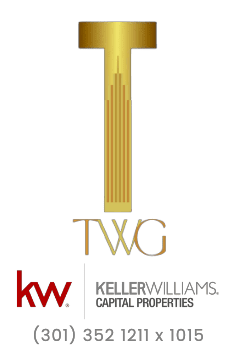The 30-year fixed rate mortgage has stood as the gold standard for American home buyers since 1954, when the Federal Housing Administration broadly adopted it. So why is this the go-to mortgage for most people?
What is a 30-year fixed rate mortgage anyway?
It boils down to affordability and predictability. With this kind of loan, payments are made over a longer period of time (as opposed to a 15-year fixed-rate mortgage), so your monthly bill will be lower. Plus, the principal and interest you need to pay each month are fixed, which means you’ll never get sticker shock when you open your bill.
But for prospective home buyers in today’s market, it’s important to understand that a 30-year fixed-rate mortgage is not always the best option.
“There’s no one-size-fits-all mortgage,” says Tim Dineen, a mortgage specialist at New Penn Financial, in Northern Virginia.
Many factors come into play when determining what type of loan is right for you, including your credit score, income, down payment amount, and, of course, what size loan you need.
So what are the factors that lead you to decide that a 30-year fixed-rate mortgage might not be the loan for you?
Sign No. 1: You plan on moving again in a year
The whole point of a 30-year fixed-rate mortgage is to spread out your payments over the long haul, so if you might move in a few years, what’s the point?
There are exceptions, but three years is a common rule of thumb for how long you need to own a home in order to recoup your investment by selling it. Some housing experts suggest that five is a more accurate minimum.
The moral of the story? If you’re planning to sell within a year, you’re probably better off renting for a year instead of buying.
Sign No. 2: You don’t have a 20% down payment
In most cases, getting a 30-year fixed-rate mortgage will require you to make a 20% down payment. On a $300,000 home, that’s $60,000. That’s a big chunk of change! So if you don’t have it handy, a 30-year fixed-rate loan might not be in the cards.
This doesn’t mean that you absolutely have to put 20% down to get a 30-year fixed. Getting approved for this type of mortgage will just be more challenging, and you’ll probably have to pay private mortgage insurance. PMI is insurance that protects lenders in case you default on the loan. (Historically, buyers with less money invested in a property are more likely to foreclose on a home.)
So if you have only enough for, say, a 10% down payment, you might be better off getting an adjustable-rate mortgage, since 10% down is the threshold typically required for this loan. Meanwhile, an FHA loan lets borrowers make a down payment of as little as 3.5%.
Sign No. 3: You need cash flow now
Let’s say you do have enough money to make a 20% down payment on a home, but you don’t want to put all your eggs in that basket. Perhaps you want to put the money into a 401(k). Or maybe you need cash on hand for some other goal, like starting a business. These might be reasons to avoid the 30-year fixed and its 20% down payment and consider putting down 10% in an adjustable-rate mortgage instead.
“An interest-only ARM is a great way to increase your cash flow,” says Dineen. During the initial period, you pay the interest on the loan but not the principal, leaving even more money free for other endeavors.
But here’s the rub: “An interest-only ARM is only available to people with great credit scores,” says Dineen. But if you qualify, it can be a boon if you want the freedom to invest your bucks elsewhere.
Sign No. 4: You want to build home equity quickly
A 30-year amortization period is the most common type of fixed-rate loan, but many home buyers also choose to get a 15-year loan. Why? A shorter loan length will allow you to build equity faster. Keep in mind, though, that your monthly mortgage payments will be higher with a shorter loan term.
Depending on your life plans (for example, if you plan to sell the home in 10 years), gaining more equity in a shorter time period might make a 15-year fixed-rate loan a better option for you than a 30-year loan. Plus, 15-year fixed-rate loans offer lower interest rates than 30-year loans, meaning you’ll save money over the life of the mortgage.
Sign No. 5: You’re planning to retire soon
Being debt-free in retirement is a priority—or at least a goal—for many baby boomers. Thus, if your golden years are in sight, taking out a 30-year mortgage on a home now might not sync well with your retirement plans. A three- or five-year ARM might make more sense, especially if you’re planning to sell the property within a few years and live as a renter in retirement.



